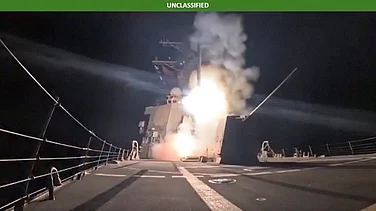China's upcoming lunar mission, Chang'e-6, slated for a 2024 launch, is set to carry an international payload, including a contribution from Pakistan, marking another stride in their collaborative efforts in space exploration. The Chang'e-6 mission focuses on obtaining samples from the moon's far side, specifically the South Pole-Aitken Basin, renowned for its scientific significance.
The far side of the moon, often referred to as "the dark side," remains relatively unexplored compared to the near side. This mission aims to delve into the mysteries of this region, which is believed to contain the Aitken Basin, a key lunar landform with considerable scientific value, PTI reported.
In a move to enhance global cooperation, the Chang'e-6 mission will carry instruments and projects from various countries. Notable contributions include France's DORN radon detection instrument, the European Space Agency's negative ion detector, Italy's laser retroreflector, and a CubeSat from Pakistan. The inclusion of a CubeSat, a miniaturized satellite from Pakistan, underscores the growing partnership between the two nations in space endeavors.
This collaboration extends beyond lunar exploration, as earlier this year, Pakistan sent seeds to China's Tiangong space station for research into environmentally resilient seeds. Moreover, there are ongoing discussions about Pakistan formalizing its participation in both the Tiangong space station and China's lunar base on the South Pole.
To facilitate communication between the moon's far side and Earth, China plans to launch the Queqiao-2 (Magpie Bridge-2) relay satellite in the first half of 2024. This satellite is crucial for ensuring seamless data transmission and coordination during the Chang'e-6 mission.


























